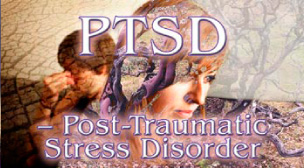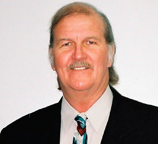
 ost of us build our lives around the ost of us build our lives around the
belief that we will be relatively safe.
Granted, normal daily life involves many stressors, especially in these hectic times, but we expect these pressures to happen and we become accustomed to handling them. The more flexible we are and the more we know ourselves and are in touch with our abilities, the easier it is to deal with normal everyday stress.
Sometimes, however, any of us could be subjected to catastrophic stress. Our feeling of safety in these circumstances can vanish. We could experience terror and a complete inability to know how to handle these situations that are outside of the ordinary realm of experience. These catastrophic events can include rape, physical or sexual abuse, physical attack, mugging, car-jacking, natural disasters (earthquakes, hurricanes, tornados, floods, etc.), fires, car accidents, plane crashes, hostage situations, school shootings, military combat, or the sudden death of a loved one. It is not only the victims of these events, but also witnesses, families of victims, and helping professionals who can develop severe stress symptoms that can last for months or even years after the event.
Post-Traumatic Stress Disorder (PTSD) is the term used to characterize people who have endured highly stressful and frightening experiences and who are undergoing distress caused by memories of that event. It is as if the person just cannot let go of the experience. The event comes back to haunt them. The anxiety experienced during or immediately after a catastrophic event is called traumatic stress. When the symptoms last several months after the event, it is called post-traumatic stress. PTSD can last for years after the original trauma and may not become evident initially. For example, an individual may witness a murder as a child, but not experience the associated stress until mid-life.
|
|
|
| |

 Robert F. Smith Robert F. Smith
 Licensed Therapist Licensed Therapist 
 Certified Addiction Counselor Certified Addiction Counselor
 License Number - SW010318L License Number - SW010318L
 Phone -484-686-4903 Phone -484-686-4903
 Fax -610-491-9253 Fax -610-491-9253
 Website - www.lifeissuescounseling.com Website - www.lifeissuescounseling.com 
I am in Private Practice and specialize in the
areas of
-
Family Counseling
-
Individual and Couples Counseling
-
LGBT and
-
Adolescents
I work with people regardless of age, race or
sexual preference. Clients who struggle with–
-
Anger
-
Relationships
-
Intimacy and
-
Communication
often find working with
LIFE ISSUES COUNSELING
a rewarding way to gain a sense of balance in
their lives.
"People will forget what you said. They will
forget what you did, but they will never forget
how you made them feel."
 – Maya Angelou – Maya Angelou
|
|
|
S ome people are more likely to develop PTSD than others. Experts are not sure why some people develop PTSD after a relatively minor trauma while others exposed to great trauma do not. Those who are very young or very old are more vulnerable. PTSD is also associated with intelligence (those with a higher level of intelligence are less likely to suffer from PTSD). Individuals who already suffer from anxiety disorders, some personality disorders, or depression seem more likely to get PTSD after extreme trauma. It seems that the more vulnerable one feels in dealing with the world, the more likely one is to develop PTSD.
Trauma of great severity is more likely to produce PTSD than lesser traumas. For example, it was found with Vietnam War veterans that prolonged combat with sniping and air bombardment produced PTSD more often than brief exposure to combat with few weapons. It has also been found that traumas between people (such as sexual assault and muggings) are more likely to produce PTSD than natural disasters like earthquakes or floods.
Symptoms of PTSD
People can be considered to have PTSD when they have been exposed to an extreme trauma, the symptoms last at least a month in duration, and the symptoms cause excessive distress so that social functioning and job performance are impaired. One sign of PTSD is that the traumatic event is relived repeatedly in the person’s mind – and this appears in the form of “flashbacks,” recurrent images, thoughts or dreams about the event...and even nightmares. Reminders of the event can cause distress – so many people go out of their way to avoid places and events that remind them of the catastrophic occurrence. Many people experience anxiety, restlessness, concentration difficulties, decreased memory, irritability, sleeplessness, hypervigilance, or an exaggerated startle response. Some people even experience what is called “survivor’s guilt” – because they survived and others did not or because of certain things they may have had to do in order to survive.
There are three main clusters of PTSD symptoms, and all three of these groupings must be present for a diagnosis of PTSD.
Intrusive Symptoms: Intrusive and repetitive memories which stir up negative feelings experienced during the trauma can overwhelm a person. These memories can appear in the form of:
- flashbacks (a feeling of reliving the trauma)
- frequent, distressing memories of the trauma
- nightmares
- emotional and physical distress when traumatic memories are triggered.
Arousal Symptoms: PTSD sufferers experience physiological reactions, which indicate that they don’t feel safe and they are physically on the alert to deal with danger. These can include:
- being easily startled or feeling jumpy
- hypervigilance (feeling “on guard” even when the situation is safe)
- concentration difficulties
- outbursts of anger and irritability
- problems in falling asleep or staying asleep.
Avoidance Symptoms: People suffering from PTSD go out of their way to escape the overpowering memories and arousal symptoms. This pattern of behavior can include:
- avoiding places, people or situations that serve as reminders of the trauma
- avoiding thoughts or feelings associated with the trauma
- memory loss about some aspects of the traumatic event
- feeling emotionally numb
- feeling estranged or detached from other people
- feelings of hopelessness and helplessness about the future
- decreased interest in pleasurable activities.
 There are other emotional and physical problems that may accompany PTSD. Unfortunately, some people seek relief from these symptoms without dealing with the root cause so that the symptoms persist. These problems may precede PTSD, in which case they become exacerbated, or they might develop after the onset of PTSD. The emotional problems include panic disorder, agoraphobia (fear of being out in public), social anxiety (speaking in public), depression, obsessive-compulsive disorder, sleep disorders, suicidal thoughts and substance abuse (drug or alcohol abuse). The physical problems can include skin problems, pain, gastrointestinal disorders, fatigue, respiratory problems, low back pain, muscle cramps, headaches, and cardiovascular problems. There are other emotional and physical problems that may accompany PTSD. Unfortunately, some people seek relief from these symptoms without dealing with the root cause so that the symptoms persist. These problems may precede PTSD, in which case they become exacerbated, or they might develop after the onset of PTSD. The emotional problems include panic disorder, agoraphobia (fear of being out in public), social anxiety (speaking in public), depression, obsessive-compulsive disorder, sleep disorders, suicidal thoughts and substance abuse (drug or alcohol abuse). The physical problems can include skin problems, pain, gastrointestinal disorders, fatigue, respiratory problems, low back pain, muscle cramps, headaches, and cardiovascular problems.
It is important to remember that PTSD is a normal reaction to a very abnormal situation. There is no shame in experiencing these symptoms, nor is having these symptoms a sign of weakness. Help is available from trained professionals so that in most cases, with the appropriate effort and courage, the symptoms can disappear completely, or at least substantially decrease and become more manageable.
Getting Help for PTSD
We live in a world of relative safety most of the time – but it is a world in which people often lack support for dealing with calamities. In these times we may not have the extended families, long-term friendships, sense of neighborhood, feeling of community, or the support from religion that have historically helped people endure times of crisis. We usually get along without difficulty as long as things go smoothly. But when a crisis occurs, we sometimes simply do not know what to do or where to turn.
Traumatic events can leave us stranded. We may lack not only social support when a crisis occurs, but also the language for understanding the place of tragedy in our lives. We may not know how to conceptualize it – how to use words that can describe a disaster and make it real. We may not know how to react emotionally when crisis comes into our lives – these are feelings that we may have never experienced before and they may frighten us. So we refuse to accept the crisis or to deal with it. We think we are strong and able to endure anything. Denial comes easily. Refusing or not knowing how to deal with the thoughts and feelings that accompany a major catastrophe, unfortunately, sets us up for PTSD. And it is not our fault.
PTSD is highly treatable, especially if it is caught early. The idea behind the treatment is to process or work through the traumatic event, as well as to manage the immediate troublesome symptoms the person is experiencing. A trained therapist can help the PTSD sufferer to find the words, in a safe and gentle way, to talk about the event and to confront the feelings that accompany the experience. This is not an easy step, but it is a necessary one. While it might seem natural to avoid reliving a painful memory, it is important to face the memories, feel the emotions, and try to work through them. When this happens, the trauma no longer controls the person – the person is now in control of the memory of the trauma so that he or she can approach it objectively and flexibly.
There are other highly effective techniques for dealing with PTSD. One is called EMDR (eye movement desensitization and reprocessing) in which the trauma is intersively processed under the guidance of a trained therapist. Others (for example, cognitive processing therapy) focus on our thoughts and work on issues where we feel stuck in trying to get beyond the trauma.
A person who has survived a traumatic event will probably never feel as if the event never happened, but the distressing and disruptive effects of PTSD can be alleviated. In therapy, a person can learn to describe a coherent account of his or her life. People who are able to do this are much less susceptible to the effects of trauma. Therapists use a number of techniques to help a person work through traumatic events, some involving talking and some involving more physical interventions. Sometimes medication can help to lessen the anxiety, depression and sleep difficulties, as well as the  physical symptoms, which go along with PTSD. Social agencies now use highly effective techniques, such as critical incident debriefing, to help people process their way through a trauma immediately after a disaster occurs in a community. Victims of violence are often now given support to talk about the event soon after it has occurred. physical symptoms, which go along with PTSD. Social agencies now use highly effective techniques, such as critical incident debriefing, to help people process their way through a trauma immediately after a disaster occurs in a community. Victims of violence are often now given support to talk about the event soon after it has occurred.
The old way of thinking was that the strongest people were those who could hold in their emotions and face tragedy stoically. Unfortunately, this is precisely the pattern which leads to PTSD. Real strength comes from knowing oneself and expressing that sense of self in the world with openness, honesty, integrity – and
courage.
Some PTSD Statistics
Most people who are exposed to extreme stress are able to process their way through their reactions and never develop PTSD.
● It has been estimated that 70 percent of people will be exposed to a traumatic event in their lifetime.
● Of those people, 20 percent will go on to develop PTSD.
● At any given time, an estimated 5
percent of people have PTSD.
● Approximately 8 percent of the population will develop PTSD during their lifetime.
● Women are about twice as likely to develop PTSD as men, mostly because women are more susceptible to experience interpersonal violence, including rape and physical beatings.
● Victims of domestic violence and childhood abuse are at tremendous risk for PTSD.
● Rape is the leading cause of PTSD. |
|

